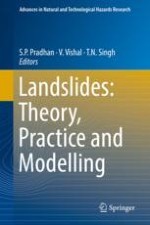2019 | OriginalPaper | Buchkapitel
13. Machine Learning Techniques in Landslide Susceptibility Mapping: A Survey and a Case Study
verfasst von : Taskin Kavzoglu, Ismail Colkesen, Emrehan Kutlug Sahin
Erschienen in: Landslides: Theory, Practice and Modelling
Aktivieren Sie unsere intelligente Suche, um passende Fachinhalte oder Patente zu finden.
Wählen Sie Textabschnitte aus um mit Künstlicher Intelligenz passenden Patente zu finden. powered by
Markieren Sie Textabschnitte, um KI-gestützt weitere passende Inhalte zu finden. powered by
